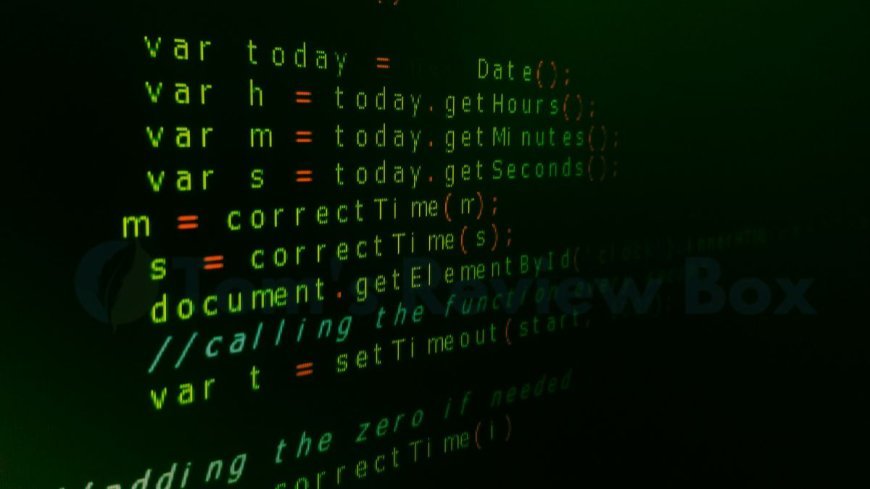What was the First Computer Programming Language? Unveiling Coding Evolution
Discover the origins of coding with our in-depth exploration of the first computer programming language. Uncover the history and evolution of programming.

Curious about the origins of computer programming languages? Ever wondered what the first computer programming language was? Delve into the fascinating history and evolution of coding with a deep dive into the roots of programming. Uncover the pivotal moments that shaped the technology we rely on today, starting from where it all began. What groundbreaking languages, such as Unix, paved the way for modern coding practices? Join us as we unravel the mystery behind the inception of computer programming languages and their impact on our digital world.
Key Takeaways
-
Understand the roots: Delve into the early programming history to grasp the evolution of computer languages from their inception.
-
Explore the origins: Discover the first programming languages like Fortran and Lisp, which laid the foundation for modern coding practices.
-
Grasp fundamental paradigms: Learn about the core programming paradigms such as procedural, functional, and object-oriented that shape how we write code today in major languages.
-
Acknowledge advancements from the 1980s period: Recognize the significant developments in programming languages during the 1980s, including the rise of languages like C++ and Perl.
-
Embrace internet-driven changes: Witness how the 1990s saw a shift in programming influenced by the internet, leading to languages like Java and JavaScript becoming prominent.
-
Stay updated with current trends: Stay informed about the latest trends in programming languages, such as Python's widespread adoption in various fields and the rise of languages like Swift for mobile app development.
Early Programming History
Origins and Evolution
Computer programming languages have evolved significantly since the 1840s, shifting from low-level machine code to high-level languages. Ada Lovelace's pioneering work in the 1840s laid the foundation for the first computer program, making her a crucial figure in programming history. The transition from punched cards used in early programmable machines to more advanced languages marked a pivotal moment in computing evolution.
Key figures like Konrad Zuse, Corrado Böhm, and John Backus played vital roles in shaping early programming languages. Zuse is known for creating the first programmable computer, while Böhm's contributions to recursive functions were groundbreaking. Backus's development of FORTRAN revolutionized programming, enabling higher-level language use.
Key Pioneers
Alick Glennie, Grace Hopper, and John Mauchly were instrumental in advancing programming languages. Glennie's work on Autocode paved the way for modern compilers, while Hopper's contributions to COBOL made programming accessible. Mauchly's role in developing ENIAC and BINAC set the stage for future language innovations.
Early Languages
The timeline of high-level programming languages began with Plankalkül in the 1940s, introducing concepts like loops and arrays. FORTRAN emerged in the 1950s as one of the first widely used high-level languages, simplifying scientific computations. Short Code, a programming language, followed shortly after, focusing on mathematical expressions and symbolic computation.
Early languages like Autocode, FLOW-MATIC, LISP, and ALGOL 60 further expanded the language landscape. Autocode introduced symbolic assembly language programming, streamlining coding processes. FLOW-MATIC's focus on data processing influenced later business-oriented languages like COBOL. LISP, a programming language, pioneered concepts like recursion and symbolic expressions, influencing artificial intelligence development. ALGOL 60 standardized syntax and semantics across different languages.
First Programming Languages
Assembly Language
Assembly language played a crucial role in early computer programming by allowing programmers to write instructions using mnemonic codes. This language served as a bridge between machine code and high-level languages, offering more human-readable commands. Programmers used assembly language to optimize program performance by directly manipulating hardware resources.
Autocode Development
Autocode emerged as one of the earliest compiled programming languages, simplifying coding tasks with its higher-level syntax. Its development focused on creating a more user-friendly approach to programming, influencing subsequent language designs. Autocode's features streamlined the coding process, making it easier for programmers to write complex algorithms using the programming language.
FORTRAN Introduction
FORTRAN, developed by a team led by John Backus at IBM, marked a significant milestone as the first commercially available programming language. This language revolutionized scientific and engineering computing with its advanced capabilities. The introduction of FORTRAN, a programming language, paved the way for faster and more efficient algorithm implementations in various fields.
Fundamental Paradigms
Paradigm Shifts
In the late 1960s to late 1970s, major programming language paradigms began emerging. Object-oriented programming gained prominence with languages like Simula and FORTH. The shift towards logic programming language also took place during this period, notably with Prolog. There was a notable debate around the concept of structured programming.
Object-oriented programming revolutionized software development by introducing concepts like classes and objects. This paradigm allowed for modular and reusable code, leading to more efficient development processes. Languages such as Simula laid the foundation for modern languages like Java and C++.
The advent of logic programming, particularly in Prolog, introduced a new way of solving problems through logical inference. This approach focused on declarative statements rather than imperative commands, influencing subsequent languages like Haskell and Erlang.
The debate over structured programming centered on the best practices for organizing code. Advocates argued that structured programs are easier to read and maintain, leading to fewer errors. This debate shaped the evolution of languages like Pascal and Ada.
Impact on Development
Early programming languages had a profound impact on software development practices. They set the groundwork for future innovations in language design and coding standards. The introduction of high-level languages enabled programmers to write code more efficiently and accurately.
Language innovations from this era influenced subsequent language design by introducing new features and paradigms. For example, ALGOL 60's syntax heavily influenced later languages like Pascal and C. COBOL's focus on business applications paved the way for domain-specific languages catering to specific industries.
The lasting effects of languages such as COBOL, ALGOL 60, and LISP are still evident in modern programming paradigms. These languages established fundamental concepts in areas like data structures, algorithms, and functional programming. Their influence can be seen in contemporary languages like Python, JavaScript, and Ruby.
1980s Developments
Modules Introduction
Programming languages in the 1980s saw significant advancements in the concept of modules. Modules are independent units of code that perform specific functions in a programming language. They play a crucial role in organizing code, making it more manageable and reusable. By breaking down programs into modules, developers can compartmentalize different functionalities, enhancing clarity and maintenance ease. This approach promotes modular programming practices, where complex systems are built from smaller, self-contained components.
Incorporating modules in programming languages allows for better code organization by structuring programs into distinct sections based on their functionalities. This not only simplifies the development process but also improves code readability and maintainability. Moreover, modules facilitate code reusability by enabling developers to use the same module across multiple projects without rewriting it each time. This efficiency boost is particularly valuable when working on large-scale applications with interconnected components.
Performance Focus
During the 1980s, there was a growing emphasis on performance optimization in programming languages. Developers began focusing on techniques to enhance program efficiency and speed to meet the increasing demand for faster computing capabilities. Techniques such as optimizing algorithms, minimizing memory usage, and streamlining processes became essential for achieving optimal performance levels.
Language design played a pivotal role in balancing performance requirements with code readability. Languages were developed with features that prioritized efficient execution while maintaining clear syntax and structure for ease of understanding. Striking this balance was crucial to ensure that programs could run swiftly without sacrificing readability or maintainability.
1990s Internet Influence
Web Development
Programming languages in web development have evolved significantly since the 1990s. New languages and frameworks emerged to meet the demands of dynamic websites and applications. The shift towards client-side scripting led to the rise of JavaScript as a crucial language for web development. HTML and CSS played pivotal roles in structuring and styling web content, respectively.
-
Pros:
-
Enhanced interactivity and user experience.
-
Faster development cycles with ready-made frameworks like React and Angular.
-
-
Cons:
-
Compatibility issues across different browsers.
-
Security vulnerabilities due to client-side scripting.
-
Language Evolution
The evolution of programming languages witnessed a transformation from early developments like Fortran and COBOL to modern, versatile languages such as Python and Java. Factors such as performance optimization, ease of use, and community support influenced the design choices of new languages. The adoption of object-oriented programming paradigms revolutionized software development practices.
-
Early languages like Fortran focused on numerical computation.
-
Object-oriented languages like Java introduced modularity and reusability.
-
Functional programming languages like Haskell emphasized immutability and pure functions.
Current Trends
Modern Languages
Modern programming languages exhibit diverse characteristics tailored to meet the evolving needs of developers. Simplicity remains a key focus, ensuring ease of understanding and readability in code. The trend towards expressiveness enables programmers to achieve more with less code, enhancing productivity.
The design of modern languages emphasizes safety, incorporating features to prevent common errors and vulnerabilities. This proactive approach reduces debugging time and enhances the overall reliability of software systems. The proliferation of domain-specific languages caters to specialized fields like data science, web development, and artificial intelligence.
-
Pros:
-
Improved readability and maintainability
-
Enhanced productivity through expressive features
-
-
Cons:
-
Learning curve for new paradigms and syntax
-
Compatibility issues when integrating multiple languages
-
Tech Advancements
Technological advancements play a pivotal role in shaping the landscape of programming languages. Hardware improvements have led to the development of high-level languages that abstract complex operations, enabling developers to focus on problem-solving rather than low-level details.
The advent of emerging technologies such as Artificial Intelligence (AI) and Internet of Things (IoT) has spurred innovation in language design. AI-driven tools assist developers in writing efficient code by providing suggestions and automating repetitive tasks. IoT applications demand languages capable of handling massive data streams and real-time processing.
-
Hardware advancements enable higher-level abstractions.
-
AI technologies streamline coding processes.
-
IoT requirements drive the development of real-time processing capabilities.
Key Figures
Influential Pioneers
Ada Lovelace, known as the first computer programmer, laid the groundwork for programming in the mid-1800s. Konrad Zuse developed the first programmable computer in the 1940s, pioneering early programming concepts. Grace Hopper introduced the concept of machine-independent programming languages in the 1950s.
These pioneers significantly shaped the early landscape of computer programming by introducing foundational concepts that are still relevant today. Ada Lovelace's work on Charles Babbage's Analytical Engine demonstrated the potential for coding instructions to control machines. Konrad Zuse's development of the Z3 computer set a precedent for future programmable machines. Grace Hopper's creation of the compiler led to higher-level programming languages, simplifying code development.
Contributions
Early programming languages, such as Assembly and Fortran, revolutionized computer science by enabling humans to communicate with machines through code. These languages marked significant milestones in bridging the gap between human logic and machine operations. The introduction of high-level languages like C and Pascal further streamlined programming processes, making coding more accessible to a broader audience.
The evolution of programming languages has not only accelerated software development but also fostered innovation across various industries. By providing developers with tools to express complex algorithms efficiently, early languages paved the way for sophisticated software applications we use today. The continuous refinement of language design principles has resulted in more robust, efficient, and versatile modern programming languages like Python, Java, and JavaScript.
Summary
You've journeyed through the evolution of computer programming languages, from the early days to the current trends. Understanding the roots of programming not only enriches your knowledge but also provides insights into the technological landscape we navigate today. By exploring fundamental paradigms, significant figures, and key developments, you grasp the intricate tapestry that shapes modern computing.
As you reflect on the impact of past innovations and anticipate future advancements, remember that your curiosity and engagement drive progress in this dynamic field. Stay informed, experiment with different languages, and embrace the challenges that come with mastering new technologies. Your exploration of programming languages is a gateway to creativity and problem-solving in the digital age.
Frequently Asked Questions
What is the significance of early programming history?
Understanding early programming history provides insights into the evolution of computer languages and their impact on modern technology.
Which was the first computer programming language ever created?
The first computer programming language was Fortran, developed by IBM in the 1950s for scientific and engineering purposes.
How did fundamental paradigms shape the development of programming languages?
Fundamental paradigms established key principles like procedural, object-oriented, and functional programming that influenced how software is designed and implemented.
What were the major developments in computer programming during the 1980s?
The 1980s saw advancements such as the rise of personal computers, graphical user interfaces, and the popularization of languages like C and Pascal.
How did the internet influence programming trends in the 1990s?
The internet boom in the 1990s led to increased demand for web development skills, resulting in languages like HTML, CSS, JavaScript gaining prominence.
What are some current trends shaping the field of computer programming?
Current trends include artificial intelligence, machine learning, cloud computing, and mobile app development driving innovation in programming languages and tools.
Who are some key figures that have made significant contributions to computer programming?
Key figures in computer programming include Ada Lovelace, Alan Turing, Grace Hopper, Dennis Ritchie, Bjarne Stroustrup among others who shaped the industry with their innovations.
What's Your Reaction?







































![MacBook Pro M5: All the features and specs you need to know [LEAKS REVEALED]](https://tomsreviewbox.com/uploads/images/202502/image_430x256_67bd6d7cd7562.jpg)


























